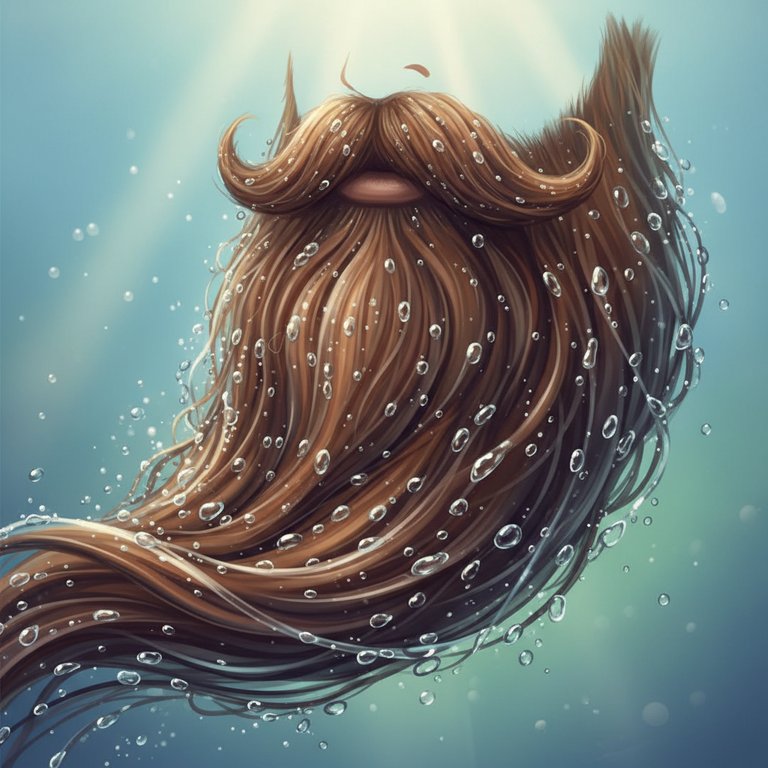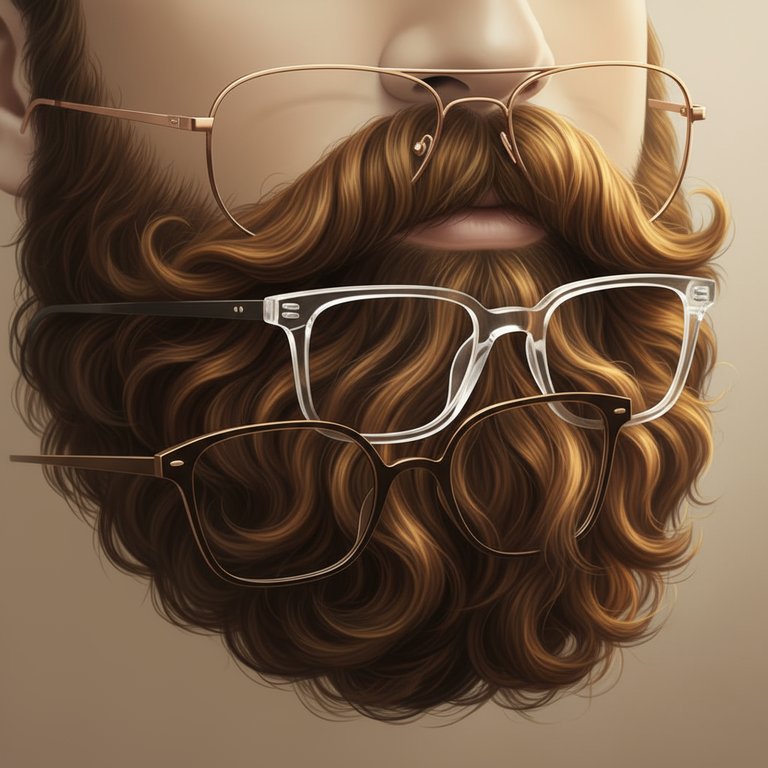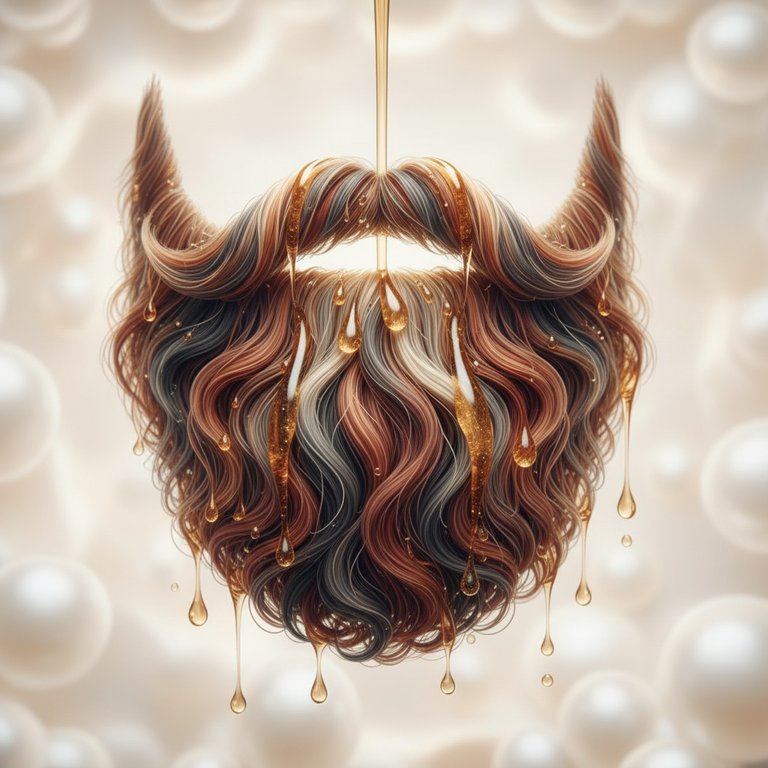Hey there, beard brothers and curious newcomers! So you've committed to the magnificent journey of growing a long beard, or maybe you're just dreaming of one. Awesome! It's a statement, a lifestyle, and let's be honest, it looks pretty epic. But as your facial masterpiece gains length, a common question often pops up: "Does a long beard get in the way when I talk?"
It's a totally valid concern! You want to enjoy your majestic mane without it becoming a literal mouthful. Nobody wants to mumble through their whiskers or feel like they're constantly swatting away stray hairs while trying to hold a conversation. From personal experience, I can tell you that yes, a long beard can sometimes feel like it's interfering, especially if you're not used to it or if it's not well-maintained. But here's the good news: it's almost always a minor hurdle, easily overcome with a few simple tricks and a bit of beard-savvy know-how. Let's dive into how you can keep your conversations flowing as smoothly as your beard hairs!
The Great Beard-Talk Conundrum: What's Really Happening?
When your beard starts reaching impressive lengths, especially around the chin and mouth area, it naturally becomes more prominent. For many, this is the goal! But it also means there's more "stuff" around your mouth. When you speak, your lips move, your jaw articulates, and air flows out – all actions that can interact with your beard.
Understanding the "Obstacle"
Think of it this way: your beard isn't a solid wall, but a collection of individual hairs. These hairs, especially if they're a bit unruly or very fine, can sometimes brush against your lips, get caught between them, or even feel like they're muffling your voice. It's usually more of a sensation than an actual impediment to speech, but that sensation can be distracting.
- The "Lip Tickle": This is probably the most common complaint. As you articulate words, especially those with 'P' or 'B' sounds, your lips might brush against the beard hairs, causing a tickle or a feeling of obstruction.
- The "Mouthful Moment": Sometimes, a few stray hairs might actually find their way into your mouth. Gross, I know, but it happens! Especially after eating or if your beard is particularly dry and flyaway.
- The "Muffled Sound" Myth: While your beard might feel like it's muffling your voice, it's highly unlikely it's actually doing so in a significant way. Your vocal cords are doing the heavy lifting, and sound waves travel through your beard just fine. The perception of muffling is often linked to the physical sensation of hairs around your mouth.
Taming the Talking Tangles: A Step-by-Step Guide
Fear not, magnificent bearded individual! You don't have to choose between a glorious long beard and clear communication. Here’s a simple routine to keep your beard in check and your conversations crystal clear.
Step 1: Keep it Clean and Conditioned
A clean, soft beard is a cooperative beard. Just like the hair on your head, beard hair benefits from regular washing and conditioning. Use a dedicated beard wash a few times a week, and follow up with a good beard conditioner. This helps keep the hairs soft, manageable, and less prone to becoming stiff or unruly.
- Why it helps: Soft hairs are less likely to feel scratchy against your lips and are easier to control.
Step 2: Hydrate with Beard Oil
Beard oil is your best friend. After washing (or even on dry days), apply a few drops of beard oil. Work it through your beard, making sure to get it down to the skin and out to the tips. This keeps your beard hydrated, reduces dryness, and adds a healthy sheen.
- Why it helps: Hydrated hairs are smoother, less prone to static, and less likely to stand out or fly into your mouth.
Step 3: Style and Control with Beard Balm or Butter
For longer beards, beard balm or butter is a game-changer. These products offer a light to medium hold, allowing you to shape your beard and keep stray hairs in place. Take a small amount, warm it between your palms, and work it through your beard, focusing on the areas around your mouth and chin.
- Why it helps: Balm or butter helps to train your beard hairs to lie in a desired direction, keeping them away from your lips and preventing them from becoming an accidental snack.
Step 4: Regular Brushing and Combing
Don't underestimate the power of a good beard brush and comb. Brushing helps distribute products evenly, exfoliates the skin underneath, and most importantly, trains your beard hairs to grow downwards and away from your mouth. A comb is great for detangling and styling.
- Why it helps: Consistent brushing and combing can effectively "teach" your beard where to go, minimizing lip interference.
Step 5: Strategic Trimming (When Necessary)
Sometimes, a little strategic trimming is all you need. You don't have to sacrifice length! Focus on the hairs directly around your mouth and upper lip. A good pair of beard trimming scissors can help you snip away any particularly long or unruly hairs that consistently get in the way. For the mustache area, keeping it trimmed just above the lip line is key for clear speech and comfortable eating.
- Why it helps: Targeted trimming keeps the "danger zone" clear without impacting the overall length and majesty of your beard.
Pro Tips & Personal Experiences for Smooth Talking
Beyond the daily routine, here are a few extra nuggets of wisdom I've picked up over the years:
Embrace the Tuck
For really long beards, especially when you're eating or in a situation where you need absolute clarity, a simple "tuck" can work wonders. Gently brush the beard hairs down and slightly under your chin. Some guys even use a bit of extra balm to hold it there temporarily. It's like giving your beard a temporary "updo" for your mouth!
The Power of Patience and Training
Just like any good relationship, your beard requires patience. When you first start growing it long, it might feel awkward. But with consistent grooming – brushing, oiling, balming – your beard hairs will eventually learn to behave. They'll soften, grow in a more uniform direction, and become less of a nuisance. It's a training process for both you and your beard!
My Own Journey
I remember when my beard first hit a certain length; I felt like I was constantly chewing on it! It was frustrating, and I even considered trimming it shorter. But instead, I doubled down on my grooming routine. More oil, more balm, and consistent brushing throughout the day. Within a few weeks, the problem drastically reduced. My beard became softer, more pliable, and just seemed to "know" its place. Now, it's rarely an issue, even during animated conversations. It really does come down to good habits.
FAQ: Your Long Beard & Talking Questions Answered!
Let's tackle some of the real questions people ask when their beard starts getting seriously long!
Q: How can I stop my beard hairs from getting in my mouth when I eat or talk?
A: The key here is consistent grooming. Use beard oil daily to soften the hairs and beard balm for hold and control. Brush and comb your beard downwards and away from your mouth regularly to train the growth direction. For eating, you can gently part your beard or even tuck it in slightly. For talking, ensure the hairs around your lips are well-groomed and styled to lie flat.
Q: Why does my long beard feel like it's muffling my voice sometimes?
A: It's highly unlikely your beard is actually muffling your voice. This sensation is almost always due to the physical presence of the hairs around your lips and mouth. When you articulate, your lips brush against the beard, creating a feeling of obstruction or tickle that can be misinterpreted as muffling. Keeping your beard soft and styled away from your mouth can reduce this feeling.
Q: What happens if I just let my beard grow without any grooming? Will it always get in the way?
A: If you let your beard grow without any grooming, it's more likely to become unruly, dry, and prone to tangles and flyaways. This definitely increases the chances of hairs getting into your mouth or feeling like they're in the way when you talk. Regular washing, oiling, balming, and brushing are essential for managing a long beard and keeping it comfortable and neat.
Q: Can I trim my mustache area shorter than the rest of my beard to help with talking?
A: Absolutely! Many bearded individuals choose to keep their mustache trimmed shorter, especially the hairs directly over the upper lip. This is a very common and practical solution for improving comfort when talking and eating, without compromising the overall length and style of your main beard. Just use a pair of good beard trimming scissors for precision.
Q: Should I use more beard balm around my mouth if my beard keeps interfering?
A: Yes, that's a great strategy! Applying a little extra beard balm or butter to the hairs around your mouth and chin can provide more hold and help them stay styled away from your lips. It's all about training those hairs. Just be mindful not to use so much that it feels heavy or greasy.
Q: How long does it take for a long beard to stop feeling "awkward" when talking?
A: This varies for everyone, but generally, with a consistent grooming routine, you can expect to feel much more comfortable within a few weeks to a couple of months. The hairs need time to soften, and for you to get used to the sensation. The more you groom and train your beard, the quicker it will adapt and become less of an issue.
Conclusion: Talk Freely, Beard Proudly!
So, does a long beard get in the way when you talk? It can, but it certainly doesn't have to be a persistent problem. With a little dedication to a solid grooming routine – keeping it clean, conditioned, oiled, balmed, and regularly brushed – you'll find that your magnificent facial hair becomes a well-behaved companion, not a conversational obstacle.
Embrace the journey, enjoy the compliments, and speak your mind clearly and confidently, knowing your beard is looking its best. Happy growing, my friends!
Disclaimer: The information provided in this blog post is for general informational purposes only and does not constitute professional advice. Always use grooming products as directed and consider your personal preferences.



